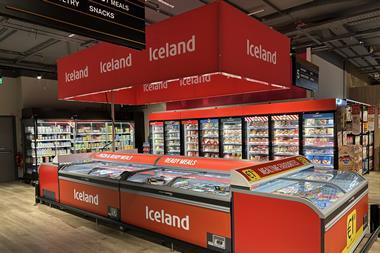Sainsbury’s is the latest retailer to be thrown into the spotlight over the customer experience – or lack thereof – at its self-checkouts. As The Grocer reported last week, the supermarket’s efforts to clamp down on dodgy discounts are leading to frustrating delays for shoppers trying to use coupons or scan yellow-sticker items in stores.
The measures were introduced in response to a surge of TikTok-driven coupon fraud at Sainsbury’s over the summer, but that hasn’t prevented shoppers taking to the internet to voice their annoyance that reduced items now have to be manually approved by store staff.
“Utterly ridiculous,” seethed one shopper in a thread on the r/Sainsbury’sWorkers forum on Reddit, accusing the supermarket of “going down the plughole”. The sentiment was shared by a customer who wrote to The Grocer directly, pointing out that the additional wait at already busy self-service tills was “not a great advert to encourage people to shop there”.
The self-checkout debate
Coverage of the ‘debate’ about self-checkouts tends to be overhyped. Despite proclamations about the “death” of customer service, or the empty threats to “take my business elsewhere” being typed angrily into the comment sections of certain newspapers, most shoppers don’t actually hate self-checkouts. Many, it transpires, actively like them.
Some 78% of shoppers polled for a Zebra Technologies global shopper report actually believe the flexibility and freedom offered by self-checkouts can improve the shopping trip.
Sainsbury’s market share growth over the last couple of years shows that, far from going down the plughole, shoppers are still choosing to shop there – despite the decision, like pretty much all of its rivals, to replace the majority of its manned tills with SCO tills.
Arguably, improvements in availability in the Grocer 33 during that time adds further weight to Simon Roberts’ argument that the efficiency gains of rolling out self-service tills far outweigh any anger.
While shoppers are more than prepared to use self-service checkouts, they expect the experience to be seamless and get frustrated when the technology doesn’t work.
According to the same Zebra survey, more than two-thirds (68%) of shoppers say retailers should make more SCO tills available, with some admitting to walking out of the store due to a lack of quick service.
That’s where Sainsbury’s could have a problem. Whether it’s for shoppers attempting to scan yellow labels or requiring additional approval for age-restricted items such as alcohol, any delays add time to what can be an already frustrating wait. Customers are, essentially, still queueing.
Difficult balance for supermarkets
As retailers continue to battle with surging levels of crime, stopping thieves without making customers feel like they’re also being treated like criminals is an increasingly difficult balance to strike.
This is not the first time Sainsbury’s efforts to curb theft at self-checkouts have caused friction with customers. It has largely paused the rollout of barriers to checkout areas after heavy criticism from some shoppers, who complained the measure made them feel like criminals.
In August, Sainsbury’s kicked off a major upgrade to equip 22,500 of its self-checkout till systems with new AI capabilities that can detect suspicious items in the packing area. The tech is also designed, in theory, to identify when potentially problematic items like herbs – which don’t weigh much – are put into the checkout basket, reducing the amount of time store colleagues are needed to manually approve items. It’s also been trialling other tech, like hybrid self-service checkouts, aimed at making its self checkouts more user-friendly.
Sainsbury’s tech teams will be working behind the scenes to come up with a more convenient, long-term fix to the latest issue of digital coupon fraud.
They will have to find a more high-tech defence quickly. The risk of digital crime will only increase as supermarkets move their loyalty schemes into apps and roll out digital media networks. Sainsbury’s is one of a number of supermarkets to have been hit by crippling cyber-glitches on multiple occasions this year.
In the meantime, what else is Sainsbury’s supposed to do?
If fraudsters and other criminals are given carte blanche to do as they wish in the name of preserving ‘customer experience’, shrinkage costs would eventually be passed onto shoppers in the form of higher prices. There is no such thing as a victimless crime, and shoppers as well as store colleagues will suffer.
As one understanding shopper pointed out on a separate Facebook forum: “Be angry at the people that steal everything and not the supermarkets trying to prevent huge losses.” Plenty will sympathise with that.
Sainsbury’s needs to find a solution soon. But, sometimes, temporary pain is justified.



















No comments yet